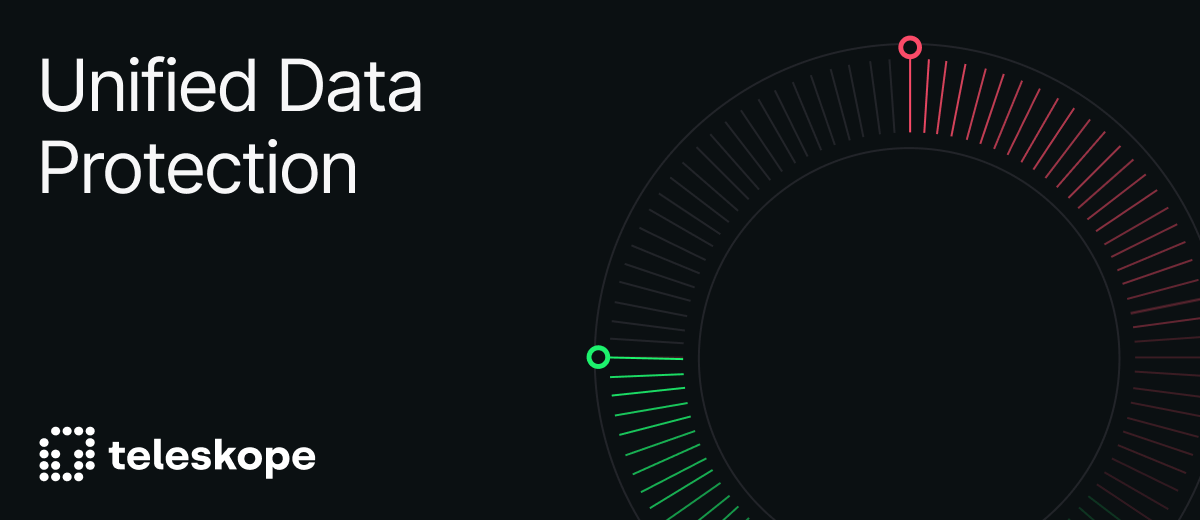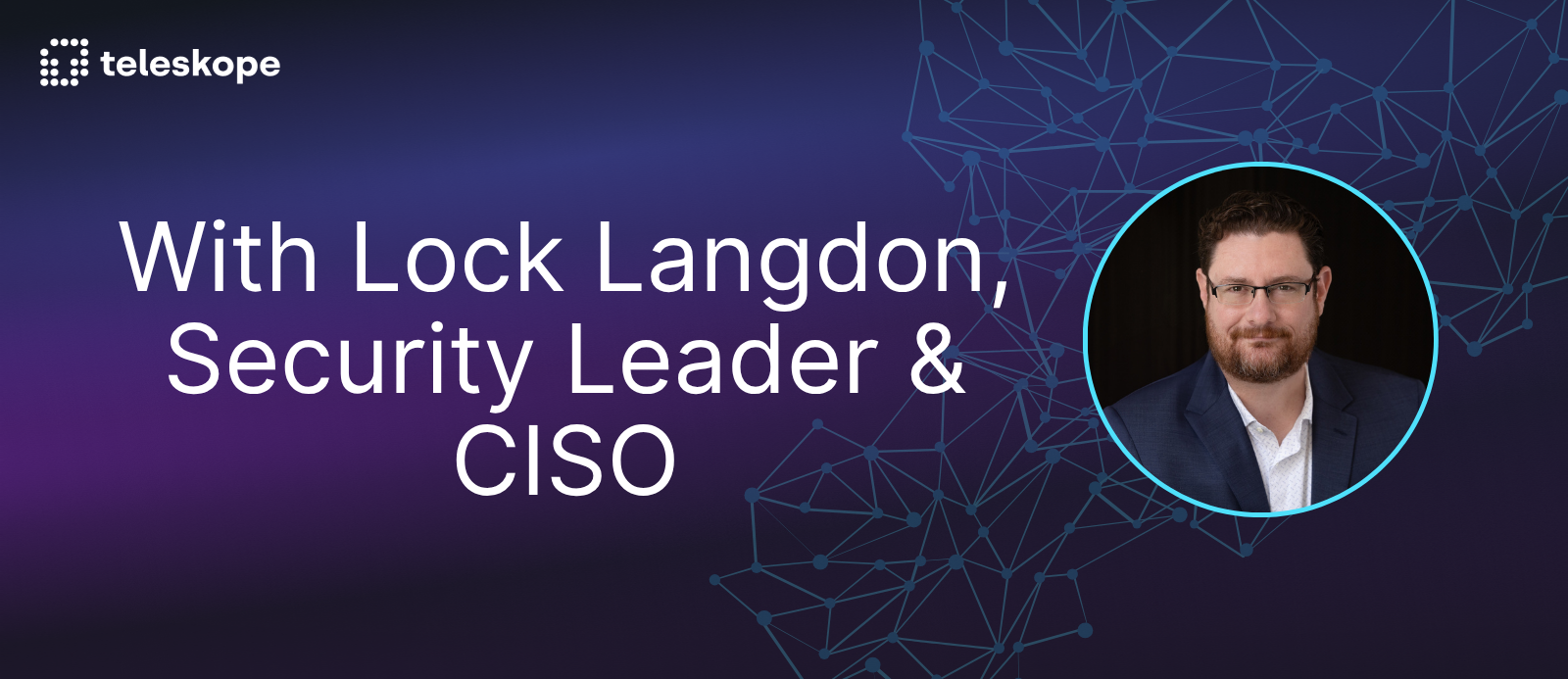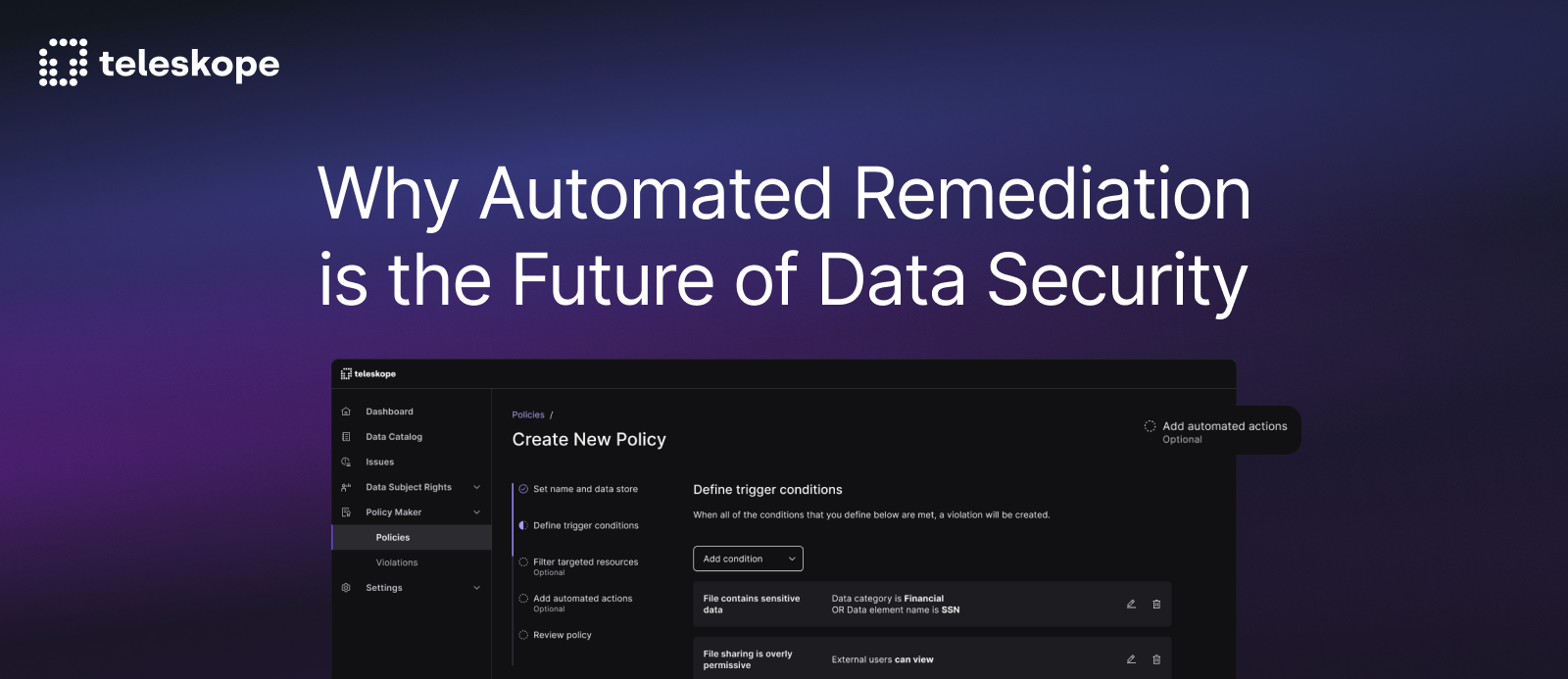Unified Data Protection: The Cornerstone of Every CISO’s Security Strategy
Security

Today’s CISOs and security teams are facing an unprecedented surge in data volume, variety, and velocity. As sensitive information becomes more difficult to secure, traditional data security tools, which depend on isolated visibility and manual remediation processes, are proving inadequate.
To strengthen their security posture management, many CISOs are looking to various DSPM and DLP tools, each promising improved protection across their data footprint. However, many point solutions like Microsoft Purview and AWS Macie offer classification capabilities primarily limited to native data stores — such as Azure ecosystems or Amazon S3 — highlighting the need for more unified, real-time protection that spans across diverse and complex data environments.
Additionally, relying on a patchwork of data security tools perpetuates the shortcomings of traditional data security models rather than solving them. Between fragmented visibility, excessive access privileges, lack of dynamic policy enforcement, and unscalable remediation workflows, bloated security stacks are no longer adequate in today’s data environments.
That’s why more forward-thinking security leaders are prioritizing solutions that offer unified data protection at scale.
In this article, we’ll explore the risks of relying on fragmented security tools and how effective CISOs are leveraging unified data protection to secure sensitive information across complex and evolving data environments.
Why CISOs Still Rely on Fragmented Data Security Tools
SaaS sprawl is a common ailment affecting over half of today’s fastest-growing organizations, and data security teams are at the forefront of this challenge.
It’s common for CISOs to have 3-4 unique tools that only cover a single task, such as data visibility. They might have one tool for analyzing data in the cloud, another for tracking sensitive information across on-prem systems, and yet another for monitoring data in motion.
Meanwhile, their security teams are continuously context-switching between these tools, each of which has its own definitions, policies, tagging systems, access controls, and methods of analyzing and classifying sensitive information. Without a single source of truth, these teams are continually operating under the looming risk of security gaps and false positives. There’s also a greater potential for duplicating work that strains already limited bandwidth.
Considering these inefficiencies alongside looming SaaS fees, why do many CISOs continue to rely on fragmented data security stacks?
Operational Inertia
Many CISOs rely on fragmented data security stacks because there hasn’t been enough urgency to change them. Overhauling tools and processes takes time, effort, and resources, and without pressing issues, teams often prioritize maintaining “good enough” solutions over disruptive upgrades.
Additionally, data security historically receives less investment compared to endpoint, application, and cloud security, leading organizations to opt for cheaper point solutions that fit budget constraints. However, this short-term cost-saving often results in higher expenses and greater risk exposure over time, because limited coverage and slow response increase breach risk. These solutions also create inefficiencies and manual work, resulting in costly incidents, fines, and remediation expenses that outweigh initial budget gains.
Organizational Silos
Security, privacy, and compliance functions frequently operate across separate departments, each with its own priorities and preferred tools. These teams often choose solutions that work well within their specific workflows, resulting in duplicative but disconnected toolsets.
In short, while more CISOs are realizing the benefits of unified data security solutions, they still have significant legacy and administrative hurdles to jump through before tangible changes to their stack can be made.
The Risks of Relying on a Fragmented Data Security Stack
When CISOs depend on a fragmented data security stack, they leave their organizations open to a range of vulnerabilities. From visibility gaps to compliance shortcomings, these are the risks every CISO should be wary of:
Visibility Gaps
With fragmented data security stacks, there is no single source of truth on where sensitive data resides, classification standards, or how to remediate vulnerabilities. As crucial functions spread across countless tools, it becomes more difficult for CISOs to address risks pre-emptively, and make informed data security decisions without spending hours context-switching between platforms. Prioritization can also get muddled when there are different systems in place, each with their own list of issues to triage.
Fragmented data security stacks also hamper policy enforcement capabilities. When tools operate in silos, policies may not be applied uniformly, leading to policy drift, enforcement gaps, compliance violations, and a lack of assurance that controls align with organizational intent.
Operational Inefficiencies
In addition to visibility gaps, operational inefficiencies are a common symptom of fragmented data security stacks. When CISOs have multiple tools, each with their own configurations, alert criteria, and workflows, the sheer amount of information isolation quickly results in unintended duplicative work across security and compliance teams.
Relying on a patchwork of data security tools also introduces the real threat of alert fatigue. Between under- and over-classified risks and duplicative flags across tools, security teams often find themselves fielding thousands of alerts per week, slowing response times and leading to missed threats. This situation also makes executing remediation workflows very difficult, as teams have little insight into what risks require immediate attention or how to work around the unique UI/UX of each tool.
Expanded Attack Surfaces
Many security tools require deep access to internal systems and sensitive underlying data to function effectively. This high level of access, while necessary for monitoring and protection, can inadvertently create new attack vectors if these tools are compromised or misconfigured. Each additional tool expands the organization’s external surface, increasing the risk that attackers could exploit vulnerabilities within the security stack itself.
When tools operate in silos without centralized oversight, tracking user actions across multiple platforms becomes challenging. This fragmentation hinders timely detection and response to malicious or accidental activities, as problematic behavior can be difficult to attribute to a specific individual or system, delaying critical remediation.
Increased Compliance Risk
When sensitive data is spread across multiple systems without a unified discovery, classification, and remediation process, organizations inevitably miss data sets or fail to apply appropriate safeguards.
This gap jeopardizes adherence to regulatory frameworks like GDPR, HIPAA, CCPA, and others. The stakes are high, as non-compliance can lead to financial penalties, legal action, reputational damage, loss of customer trust, operational disruptions, and even criminal charges.
A notable example occurred with the Marriott Hotels chain, where sensitive guest information was compromised over several years. The breach affected multiple data repositories across systems without unified visibility or controls, leading to the exposure of personal data of millions of guests. The incident resulted in significant regulatory scrutiny, reputational damage, and an £18.4 million fine issued by the UK’s data privacy watchdog, the Information Commissioner’s Office, for GDPR violations. This breach underscored how fragmented data environments and insufficient unified data governance can magnify the impact of security incidents.
Why Effective CISOs Rely on Unified Data Protection
As the risks of fragmented data security stacks continue to mount, forward-thinking CISOs are moving toward unified data protection solutions. These solutions replace your patchwork of tools with one comprehensive system that secures all sensitive information across your organization’s data footprint. Here’s what makes unified data protection indispensable for today’s security leaders:
Holistic Data Visibility
Unified data protection solutions provide a single, integrated view of where sensitive information resides across your entire data footprint. Instead of piecing together partial insights from multiple tools, CISOs gain real-time visibility across cloud data stores, SaaS tools, and on-prem systems all in one place. This unified approach is vital for identifying risks that span across environments while empowering security teams to prioritize investigations and remediation more effectively.
Integrated Remediation and Compliance
Holistic visibility across your data footprint is only valuable when paired with the ability to rapidly remediate security issues.
Unlike DSPM and DLP tools, unified data protection solutions combine comprehensive visibility with automated remediation, ensuring data deletion, redaction, masking, and access controls can be consistently enforced at scale. Not only does automated remediation transform visibility into tangible security outcomes, but it also empowers security teams to reclaim bandwidth for other valuable tasks, including routine access management and incident documentation.
From a compliance standpoint, having fewer tools to manage simplifies audits and reporting. Unified data protection platforms streamline the generation of consistent, comprehensive documentation for continuous monitoring and risk mitigation. This transparency is critical for meeting evolving regulatory requirements and for demonstrating accountability during audits.
Simplified Operations
Managing one unified solution (rather than a patchwork of tools) dramatically reduces operational complexity and costs. It eliminates duplicative workflows and broken lines of communication between security, privacy, and compliance teams. Consistent controls and standardized processes ease policy enforcement, improve alignment, and streamline governance.
Consolidating multiple point solutions into one platform not only cuts software subscription costs but also significantly reduces the time and effort required to implement, manage, and monitor disparate tools and coordinate with multiple vendors. This streamlining frees up valuable budget and human resources that security teams can redirect toward strategic initiatives and innovation rather than constant firefighting and vendor management overhead.
How to Achieve Unified Data Protection with Teleskope
Teleskope combines the greatest strengths of DSPM and DLP tools into a unified data security platform that combines and optimizes the entire process from data discovery through remediation.
To eliminate visibility gaps and data risk, Teleskope continuously scans and classifies structured and unstructured data across your entire data footprint. Whether it’s PHI located in classified health documents in Azure Blob storage, PII shared in a Zendesk ticket, or financial transaction records in on-prem SQL servers, Teleskope classifies and catalogs this data rapidly, enabling CISOs to maintain a robust visibility from a single source of truth. Plus, unlike tools that rely on pattern matching or rigid classification models, Teleskope provides security leaders with deep, context-rich insights, including persona identification, context previews, and document summaries, on top of classifying data by elements and entire document types, while empowering CISOs to create bespoke and granular classification and remediation policies tailored to their organization’s needs.
Beyond visibility, Teleskope enables automated remediation workflows — such as data deletion, redaction, and access revocation — that ensure timely, consistent enforcement of policies across environments, minimizing risk and closing security gaps without manual intervention.
The Atlantic, for instance, used Teleskope to automate its entire data deletion lifecycle, achieving a 95% reduction in time spent on deletions and a 97% decrease in query costs — turning a previously high-friction process into a seamless and scalable operation.
Additionally, Ramp, a leading financial operations platform, partnered with Teleskope to achieve real-time data redaction, enabling them to proactively secure sensitive information across internal systems and prevent exposed PII from perpetuating in production environments.
In a data environment where fragmented tools are struggling to keep up, Teleskope continues to give CISOs the clarity and solutions to maintain a robust security posture.
Ready to Unlock a More Efficient and Scalable Data Security Strategy?
The traditionally fragmented approach to data security has reached its limit. As data volumes grow and regulatory landscapes evolve, more CISOs are recognizing the need for unified data protection solutions designed for everything from classification to seamless remediation. If you’re still working with a fragmented data security stack, it’s time to consider an alternative approach.
Book a demo today and discover how Teleskope can replace your patchwork of DSPM and DLP tools with a unified solution built for the scale and complexity of modern data.
Introduction
Kyte unlocks the freedom to go places by delivering cars for any trip longer than a rideshare. As part of its goal to re-invent the car rental experience Kyte collects sensitive customer data, including driver’s licenses, delivery and return locations, and payments information. As Kyte continues to expand its customer base and implement new technologies to streamline operations, the challenge of ensuring data security becomes more intricate. Data is distributed across both internal cloud hosting as well as third party systems, making compliance with privacy regulations and data security paramount. Kyte initially attempted to address data labeling and customer data deletion manually, but this quickly became an untenable solution that could not scale with their business. Building such solutions in-house didn’t make sense either, as they would require constant updates to accommodate growing data volumes which would distract their engineers from their primary focus of transforming the rental car experience.
- list
- list
- list
- list
Continuous Data Discovery and Classification
In order to protect sensitive information, you first need to understand it, so one of Kyte’s primary objectives was to continuously discover and classify their data at scale. To meet this need, Teleskope deployed a single-tenant environment for Kyte, and integrated their third-party saas providers and multiple AWS accounts. Teleskope discovered and crawled Kyte’s entire data footprint, encompassing hundreds of terabytes in their AWS accounts, across a variety of data stores. Teleskope instantly classified Kyte’s entire data footprint, identifying over 100 distinct data entity types across hundreds of thousands of columns and objects. Beyond classifying data entity types, Teleskope also surfaced the data subjects associated with the entities, enabling Kyte to categorize customer, employee, surfer, and business metadata separately. This automated approach ensures that Kyte maintains an up-to-date data map detailing the personal and sensitive data throughout their environment, enabling them to maintain a structured and secure environment.
Securing Data Storage and Infrastructure
Another critical aspect of Kyte’s Teleskope deployment was ensuring the secure storage of data and maintaining proper infrastructure configuration, especially as engineers spun up new instances or made modifications to the underlying infrastructure. While crawling Kyte’s cloud environment, Teleskope conducted continuous analysis of their infrastructure configurations to ensure their data was secure and aligned with various privacy regulations and security frameworks, including CCPA and SOC2. Teleskope helped Kyte identify and fortify unencrypted data stores, correct overly permissive access, and clean up stale data stores that hadn’t been touched in a while. With Teleskope deployed, Kyte’s team will be alerted in real time if one of these issues surfaces again.
End-to-End Automation of Data Subject Rights Requests
Kyte was also focused on streamlining data subject rights (DSR) requests. Whereas their team previously performed this task manually and with workflows and forms, Kyte now uses Teleskope to automate data deletion and access requests across various data sources, including internal data stores like RDS, and their numerous third-party vendors such as Stripe, Rockerbox, Braze, and more. When a new DSR request is received, Teleskope seamlessly maps and identifies the user’s data across internal tables containing personal information, and triggers the necessary access or deletion query for that specific data store. Teleskope also ensures compliance by automatically enforcing the request with third-party vendors, either via API integration or email, in cases where third parties don’t expose an API endpoint.
Conclusion
With Teleskope, Kyte has been able to effectively mitigate risks and ensure compliance with evolving regulations as their data footprint expands. Teleskope reduced operational overhead related to security and compliance by 80%, by automating the manual processes and replacing outdated and ad-hoc scripts. Teleskope allows Kyte’s engineering team to focus on unlocking the freedom to go places through a tech-enabled car rental experience, and helps to build systems and software with a privacy-first mindset. These tangible outcomes allow Kyte to streamline their operations, enhance data security, and focus on building a great, secure product for their customers.


from our blog

